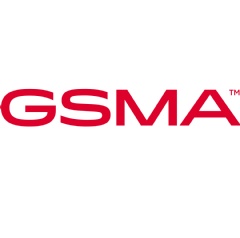6 ways businesses can secure private blockchains
There has been significant growth in organizations implementing private blockchain technology. But despite its reputation, it’s important not to assume that blockchain is secure just because it relies on cryptography. An appropriate security design with controls that address an organization’s acceptable risk should be applied and reviewed before blockchain is deployed to a production environment.
I’ve had various conversations with people at conferences and events about this technology, and many people immediately start discussing Bitcoin or Ethereum, but these are not private blockchains – they are public blockchains. I have observed that many people do not know that cryptocurrencies are just an application of blockchain technology. It is important to know the difference between the two.
A public blockchain is permissionless and anyone can join the network and participate in the blockchain. Most cryptocurrencies you hear about on the news or read about on social media are public blockchains and open to others to read and write to them. In addition, transactions made on a public blockchain are usually immutable and available for others to see.
A private blockchain is permission-based and uses access controls configured to limit who can participate in the network. Only the members of the network will know about other participants.
With a private blockchain, any organization can implement its blockchain and control which transactions are added to the chain. Of course it has to be a secure system, but it will still be based on the trust and confidence of the centralized authority or third party that manages it.
Increasing use of private blockchains
Many Fortune 500 organizations are planning a deployment or have deployed a private blockchain in their network. According to Fortune Business Insights, The blockchain market is estimated to grow from USD 7.18 billion in 2022 to USD 163.83 billion by 2029.
Companies have realized that private blockchains are evolutionary and have implemented this technology in their business processes. Many of these enterprises use Hyperledger Fabric to develop their private blockchain. Hyperledger Fabric is an open source platform/framework for building a private distributed ledger managed by the Linux Foundation.
There are a number of new use cases for private blockchains today. Many healthcare organizations are beginning to use private blockchain technology to help doctors, patients and insurance providers securely transfer sensitive medical information using smart contracts to define the sharing parameters.
In technology, supply chain software can improve supply chain transaction processes by increasing the clarity and traceability of transactions with a private blockchain. Companies that have access to the ledger can see data about previous transactions. This fact increases accountability and reduces the risk of fraudulent transactions.
A diamond mining company used a private blockchain to verify the authenticity of diamonds to ensure that they are not blood diamonds or that they do not come from specific sanctioned sources.
In the future, I expect to see more banks working together to develop consortium blockchains to speed up transaction time and verification when account holders need to transfer funds from one bank to another. It is important to note that this will not necessarily involve cryptocurrency, but instead may involve the standard transfer of a specified nation’s currency.
Private Blockchain Vulnerabilities
There are many advantages to a private blockchain over a public one such as a faster transaction speed, the ability to reverse transactions and lower energy and power consumption. However, it has no advantage when it comes to security. It is usually less secure and more vulnerable to attacks, data breaches and manipulation. As a result, it is much easier for bad actors to compromise the entire network.
Private blockchain operators must decide how to solve the problem of lost identification credentials, especially for systems that manage physical assets. Bitcoin and Ethereum provide no recourse for those who have lost their private keys, and if they are lost, they are almost impossible to recover. In recent cases, investors have lost their private keys and are unable to access millions of dollars in gains from their investments.
In a private blockchain, owners can decide whether and under what circumstances to reverse a verified transaction, especially if the transaction appears to be a theft. Also, only a single organization can read and write to the ledger. In many cases, they can clear a block. For this reason, private blockchains can be more vulnerable to attack, while blocks in a public blockchain cannot be deleted or transactions reversed by any authority.
How to secure your private blockchain network
Here are six steps organizations should consider to secure their private blockchain solution.
- Use the privacy-by-design concept in the early design phase. When using this approach, you will consider data processing, retention and deletion in the earlier stages of the design. You will consider regulatory requirements such as GDPR and other privacy laws that are relevant to the data. It is important to note that this approach may affect the type of data that can be stored on-chain due to any regulatory requirements. However, the earlier you can decide this, the better, as you can ensure you have an optimal design to implement in production. This approach will identify all off-chain services that your private blockchain will rely on and ensure that the appropriate controls are applied to manage any risk. For example, if you use a third-party provider for data validation and that provider is hacked, your private blockchain will be exposed.
- Complete a pre-deployment risk assessment. Work with relevant business units inside and outside of IT to ensure you have identified the acceptable risk of deploying a private blockchain in your environment. Ensure controls are in place to protect the data with a level of residual risk acceptable to the business. It is important to get input from all stakeholders.
- Periodically perform a third-party risk assessment of providers and users on the blockchain. Don’t trust anyone to connect to your blockchain, and make sure your connection requirements are documented and reviewed regularly. This is very important in a private blockchain since there is a possibility that data can be deleted or modified, and you don’t want to have connected any unsecured sources that can exploit this vulnerability.
- Have a robust key management process in place. Implementing a secure, scalable and resilient key management process is extremely important. This will include key backup, automated key management/rotation, enforced key management requirements and, possibly, hardware to store them. Protection of these keys is essential to protect the data and the environment, and any unauthorized access to the keys can break the encryption. This could cause significant problems if the central authority were to have its private key stolen by an attacker.
- Continue to use production-grade security controls on your private blockchain. For example, ensure that firewall protection, two-factor authentication, file integrity monitoring, endpoint security controls, etc. are applied to your private blockchain. Don’t assume that because it’s encrypted, standard security checks are unnecessary; because the environment is not a public blockchain, you must prevent any unauthorized modification of data.
- Use a trusted cybersecurity provider to audit and review your design and controls. This includes penetration tests, security assessments, smart contract audits, source code reviews and blockchain infrastructure audits. A reliable organization should only do this with experienced resources. It would be best to do this before deploying a private blockchain in the production environment. This can be used periodically to identify any gaps in the design and prepare the infrastructure for new threats or automated agents.
Following these steps can increase the time before deploying a private blockchain application. Still, it’s well worth ensuring your data is protected while helping to prevent an organization from having to delay a production deployment due to security concerns.
Using these measures for protection can help reduce the costs incurred if the organization were to be hacked or if partners or clients on the private blockchain were to lose confidence in the network.
Recent articles by author


